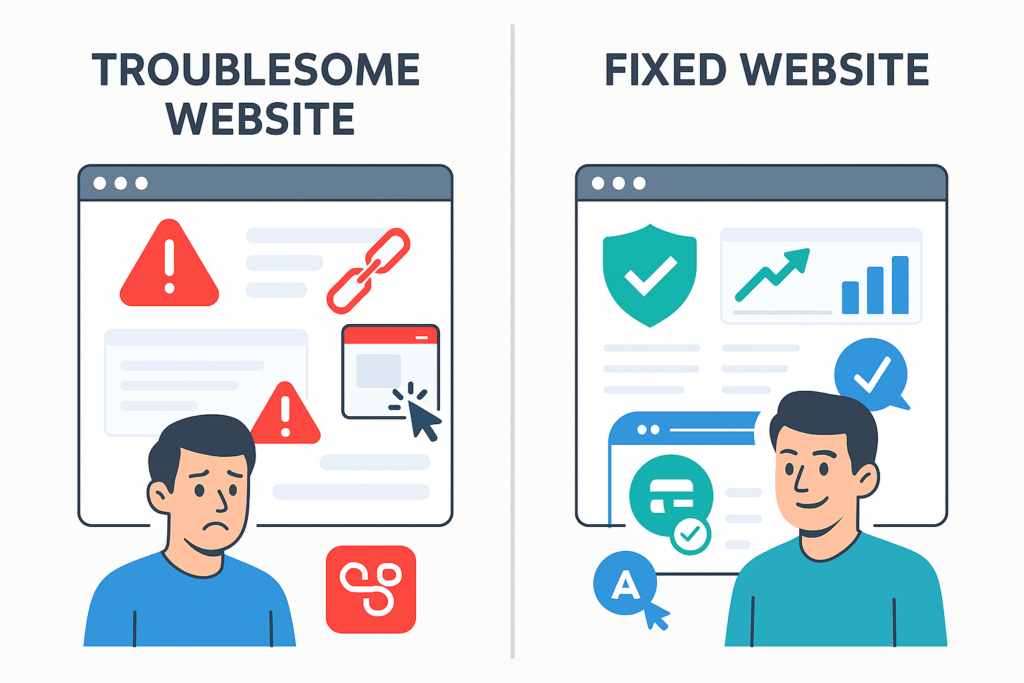Where does the blame lie? Is it the prospect’s responsibility, or should they be expected to know better? On the other hand, not all web designers are well-versed in search engine optimization, given the absence of certification requirements for web designers. The prospect invested $y and y hours into the site, yet it yields no results. Expressing my frustration, I’m likely not alone in this sentiment. What proactive measures can we take? While SEMPO aims to educate, is additional certification needed?
In the digital age, not every website you encounter will be safe, reliable, or user-friendly. From malicious websites filled with malware to poorly designed sites that frustrate users, troublesome websites are everywhere. Knowing how to handle them is crucial for both everyday users and business owners who manage their own web presence.
1. What Makes a Website Troublesome?
A “troublesome” website can mean different things depending on context. Common issues include:
Security risks (malware, phishing attempts, unsafe downloads)
Excessive ads or pop-ups disrupting the user experience
Slow loading speeds and broken navigation
Outdated or inaccurate information
Poor mobile responsiveness
Whether it’s unsafe or simply frustrating, these issues harm both users and the website’s SEO performance.
2. For Users: How to Handle Troublesome Websites
If you land on a suspicious or poorly performing site, here’s how to protect yourself:
Check security: Look for HTTPS and a lock icon in the browser.
Use antivirus/antimalware tools to block harmful sites.
Avoid clicking shady links or downloads.
Leave immediately if the site looks untrustworthy.
Use browser extensions (like ad blockers) for safer browsing.
3. For Website Owners: Fixing Your Troublesome Site
If your own website is troublesome to users, it’s time to act. Steps include:
Improve security: Add SSL certificates and keep software/plugins updated.
Enhance user experience (UX): Simplify design, fix broken links, and reduce pop-ups.
Boost performance: Optimize images, enable caching, and use a reliable host.
Mobile optimization: Ensure responsive design for all devices.
Audit regularly: Use tools like Google Search Console, GTmetrix, or SEMrush to catch issues early.
4. SEO Impact of Troublesome Websites
Search engines penalize websites that frustrate users or compromise security. Common negative effects include:
By addressing issues early, you not only improve user experience but also strengthen your SEO and online reputation.
Troublesome websites can be a nightmare for both visitors and owners. But with the right precautions and proactive maintenance, they can be avoided or fixed. For users, safety tools and awareness are key. For website owners, prioritizing security, speed, and usability ensures your site remains trustworthy and SEO-friendly.
A smooth, safe, and optimized website isn’t just good for users — it’s good for business.





